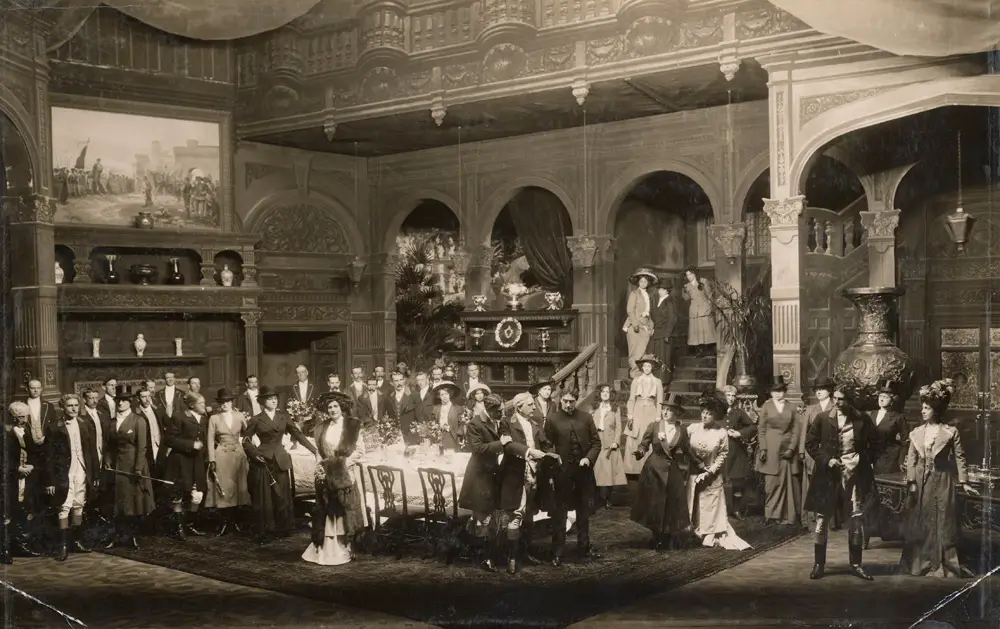In the late 1800s, innovations in technology and infrastructure allowed new forms of entertainment to flourish and become popular. As the United States became more urban and connected by railroads, more citizens had access to these emerging entertainments. Several key developments changed the entertainment landscape.
Vaudeville Shows Thrive in Growing Cities
As more Americans flocked to rapidly growing cities in the late 19th century seeking jobs and excitement, a thriving urban entertainment culture emerged. Variety theater known as vaudeville became immensely popular, offering a changing lineup of live skits, songs, dances, acrobatics, and oddities. The affordable shows brought together elements of drama, comedy, and music hall into fast-paced revues drawing huge crowds to theaters. The popularity of vaudeville reflected the increasingly diverse audiences in bustling cities.
Baseball Captivates Fans Nationwide
While various ball-and-bat games had existed for decades, modern baseball complete with standardized rules and leagues began taking shape in the late 1800s. Improvements in infrastructure like railroads and telegraph lines enabled teams from different regions to coordinate games and for fans to travel to competitions. Boosted by enthusiastic newspaper sports coverage read voraciously by Americans, baseball teams and star players became icons. Crowds packed stadiums to cheer teams representing their communities. Baseball’s rising popularity reflected swelling hometown pride in a rapidly changing nation.
Amusement Parks Offer Thrilling New Rides
As growing middle classes in cities sought entertainment, specially-built amusement parks emerged offering dazzling rides, games, and spectacles. Parks combined traditional entertainment like carousels and side shows with new mechanical rides like roller coasters. Using innovations like steam engines, secured tracks, and safety bars, roller coasters provided the thrill of speeding down steep drops. Parks also created immersive worlds to explore like fairy tale villages or recreated disasters. Affordable jaunts to amusement parks packed with unimaginable wonders became a favorite urban pastime by the late 1800s.

Here are answers to some frequently asked questions:
What innovations enabled new entertainment in the late 1800s? Infrastructure improvements like railroads and telegraph lines connected more Americans, while technologies like steam engines powered thrilling mechanical rides.
Why did baseball become so popular then? Baseball fever swept the nation as teams from different regions began competing thanks to better transportation. Enthusiastic newspaper coverage also boosted interest.
How did vaudeville reflect changing audiences? Vaudeville variety shows featuring many acts in quick succession resonated with the burgeoning diversity of urban centers.
Why did amusement parks succeed? They enabled emerging urban middle classes to access wonders and thrills previously unimaginable at affordable prices.
What connected the era’s popular entertainment? Many capitalized on Americans’ swelling civic pride, interest in technological advances, and appetite for mass, commercialized fun as the nation rapidly modernized.
In conclusion, innovations like mass transportation infrastructure and industrial technologies enabled distinct new forms of popular entertainment to emerge in late 19th century America. Vaudeville variety shows nationwide baseball leagues complete with star players and spectacular amusement parks with unimagined thrill rides reflected and shaped a period of rapid growth. By offering affordable access to spectacle and community connection on a mass scale, these entertainments provided enjoyment and escapism for swaths of Americans during a transformative era. The runaway popularity of these new amusements stemmed from their resonance with swelling hometown spirit, interest in technology’s possibilities, and appetite for mass, commercial fun as the industrial age roared into being.

